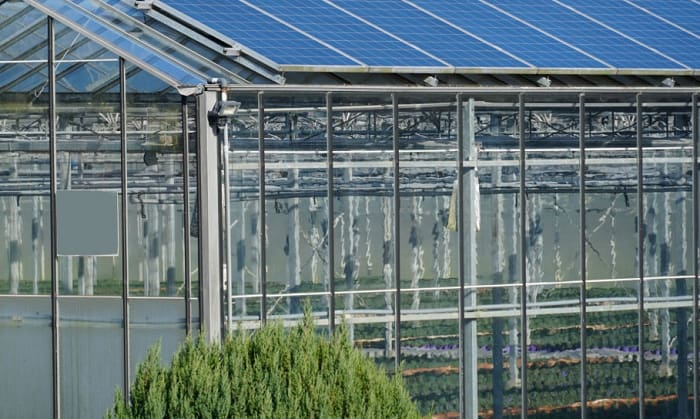These days, many homeowners prefer cheaper and environmentally safer alternatives for heating. One of the best ways is none other than solar heating. Not only is this method safer and better for the environment as compared to electric heating, but it is also more affordable because the energy is gotten from the same energy that comes from the sun.
So, how do you use solar panels for your greenhouse? That’s what I’m here to teach you! This guide that I’ve made will show you how to heat a greenhouse with solar panels without spending too much money on your electricity bill
Table of Contents
Equipment and Materials You’ll Need
Before we begin, you must first have all the necessary materials needed for this job. I’ll give you a quick breakdown of all the things required. Basically, all you need is a solar panel kit. Here are the things you’ll find in one:
- Solar Panel
- Temperature sensor
- Voltage sensor for the battery
- Alligator clip
- Charging controller
- Casing
- Handle and latches
These are the things you’ll need to install the solar panel. The next thing we’ll get to is the steps on how to install the solar panels. Let’s go to the steps below.
Steps on How to Heat a Greenhouse With a Solar Panel
1. Create Your Plan
First of all, you need to know where you’re going to set up your solar panels and how you’re going to install them. You first do this by getting the dimensions of the solar panel and making sure you find the appropriate space to fit them on. What I usually do is that I survey my roof first and get the measurements. From there, I check if my roof is big enough to handle the size of the panels.
Another thing you need to plan out is how much weight your roof can support as well as what direction you need your panels to face. You need to make sure that the panel is facing the direction where the sunlight goes down on. That way, you can really optimize the sun’s rays.
2. Install the Supports
When all the planning is done, the next step is to bring out the bracket, latches, and handles. These parts are used to secure the panels to the roof. Make sure to angle the panels properly so that they fully face the sun. You can also have a get a mount rail system that allows you to position the panels at any angle at will. If you think that the current supports are too weak, you can buy extra supports so that your panel won’t slide off.
3. Wire Them All Together
With the several panels you have, you need to make sure that they’re all connected with each other. First, insulate all the wires and ensure that they’re all waterproof. Attach a ground wire from the mounting hardware that’s attached to the ground. This is to make sure that you won’t get any shock. Also how to connect the solar panel to the battery and inverter is also very important in the installation.
4. Set Up the PV Panels
With that all done, you now need to install the photovoltaic system. This is to be placed in a safe part of the house that has ventilation and no moisture. The garage is usually a good bet. Install it there and put the protective covering over it.
5. Finalize the Installation
The last thing to do is to attach the AC breaker panel in your home to the inverter. After that, attach the DC disconnect switch and the PV system parts to the PV wires. Lastly, connect the main DC disconnect to the inverter we talked about earlier. From there, all you need to do is test the solar panels when the day comes.
If you are interested in their longevity, learn more about the lifespan of solar panels
Conclusion
Did you enjoy the short tutorial that I prepared in this article? I hope that you learned something from it. Now, I’d like to reiterate the reasons solar panels have been made to be such a big hit among homeowners. It is safer, cheaper, and better for the environment. With a solar panel and my handy guide, you’ll be on your way to having a nice and efficient solar panel.
If you liked the article, don’t forget to share it or tell us what you think.

I am Kathleen Miller, staff writer and reviewer of the Avasolar team. Working with the team has been a pleasure for me so far, I hope to bring readers useful information by creating detailed and easy-to-follow contents.


